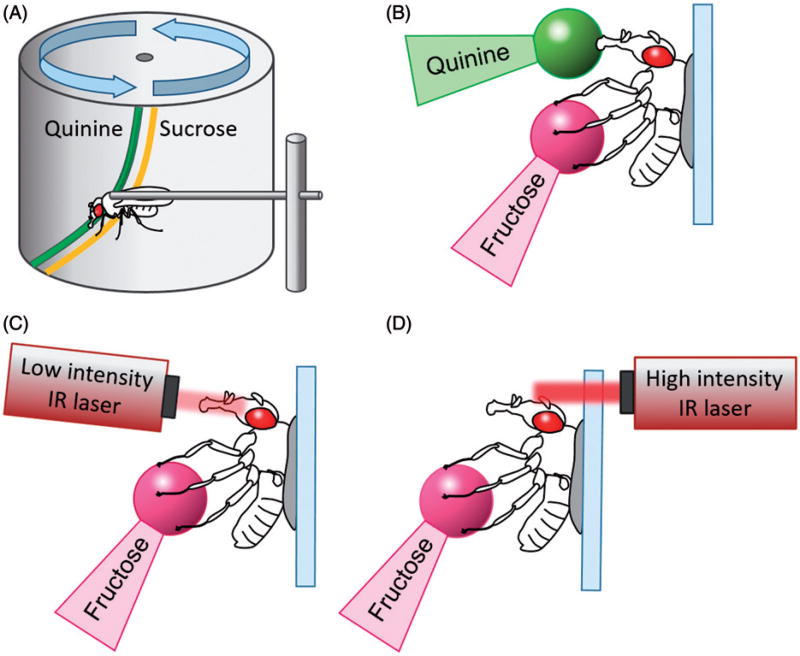Figure 1.
Training setup for aversive taste conditioning. (A) A tethered fly walks on a rotating cylinder. Sucrose stimulation of tarsi by strip of sucrose elicits proboscis extension that is punished by an aversive quinine ingested by the extended proboscis. The inhibition of such PER response can be conditioned over trials (Medioni and Vaysse 1975). (B) A tethered fly is attached to a microscopy slide with free legs and proboscis. A droplet of a fructose is applied on the tarsi to elicit proboscis extension. Droplet of quinine is then applied to proboscis and allowed to be ingested. This leads to subsequent reduction of PER response to fructose (Keene and Masek 2012). (C) Proboscis-targeted low-intensity infrared (IR) laser is used to activate TRPA1 expressed in bitter-sensing or dopamine neurons together with fructose presented to tarsi leading to suppression of PER (Keene and Masek, 2012). (D) High-intensity IR laser is used to heat up antennae as a aversive noxious stimulus, and paired with one sugar presented to tarsi was used for discriminatory associative learning (Masek and Scott 2010).

